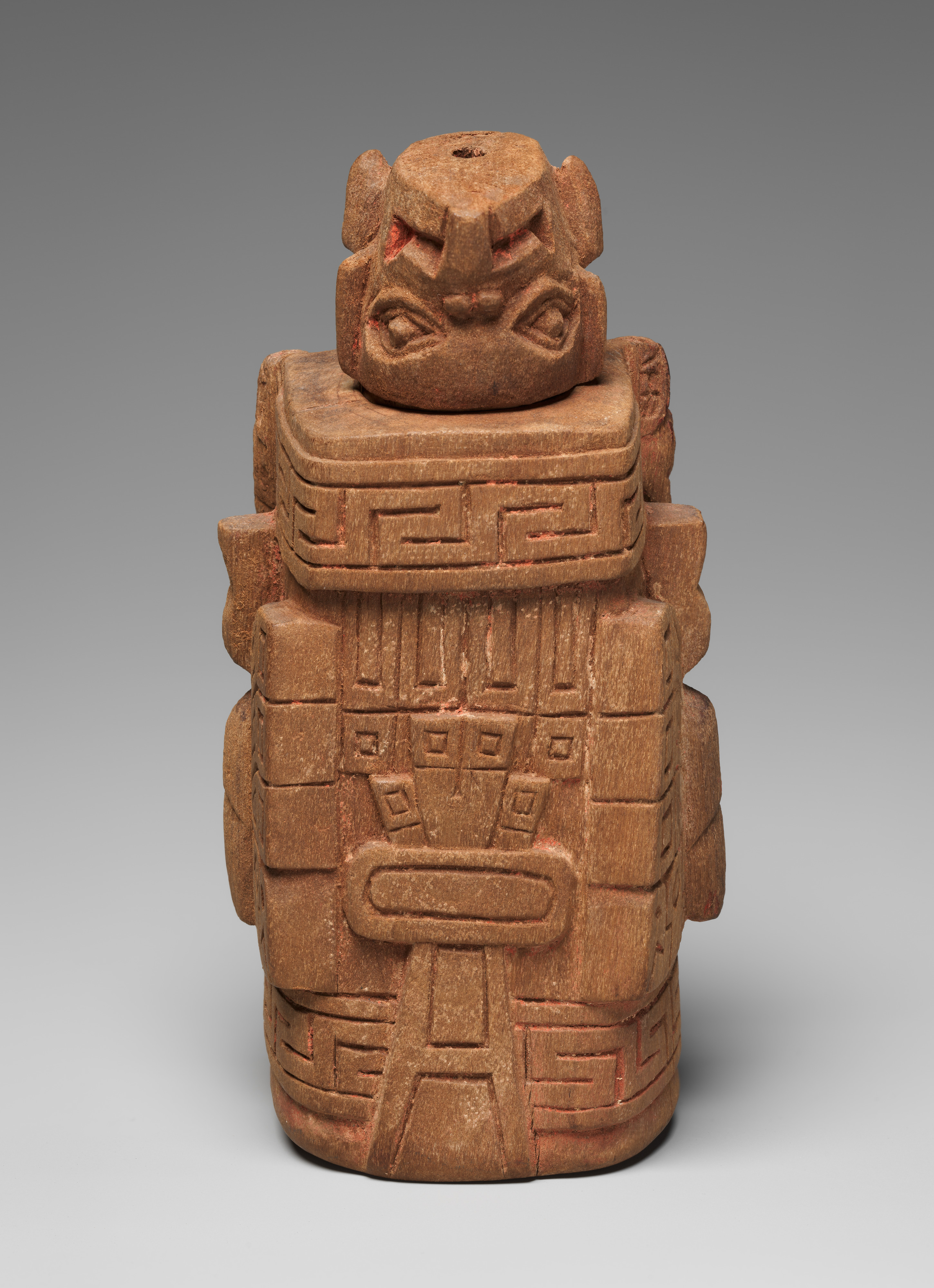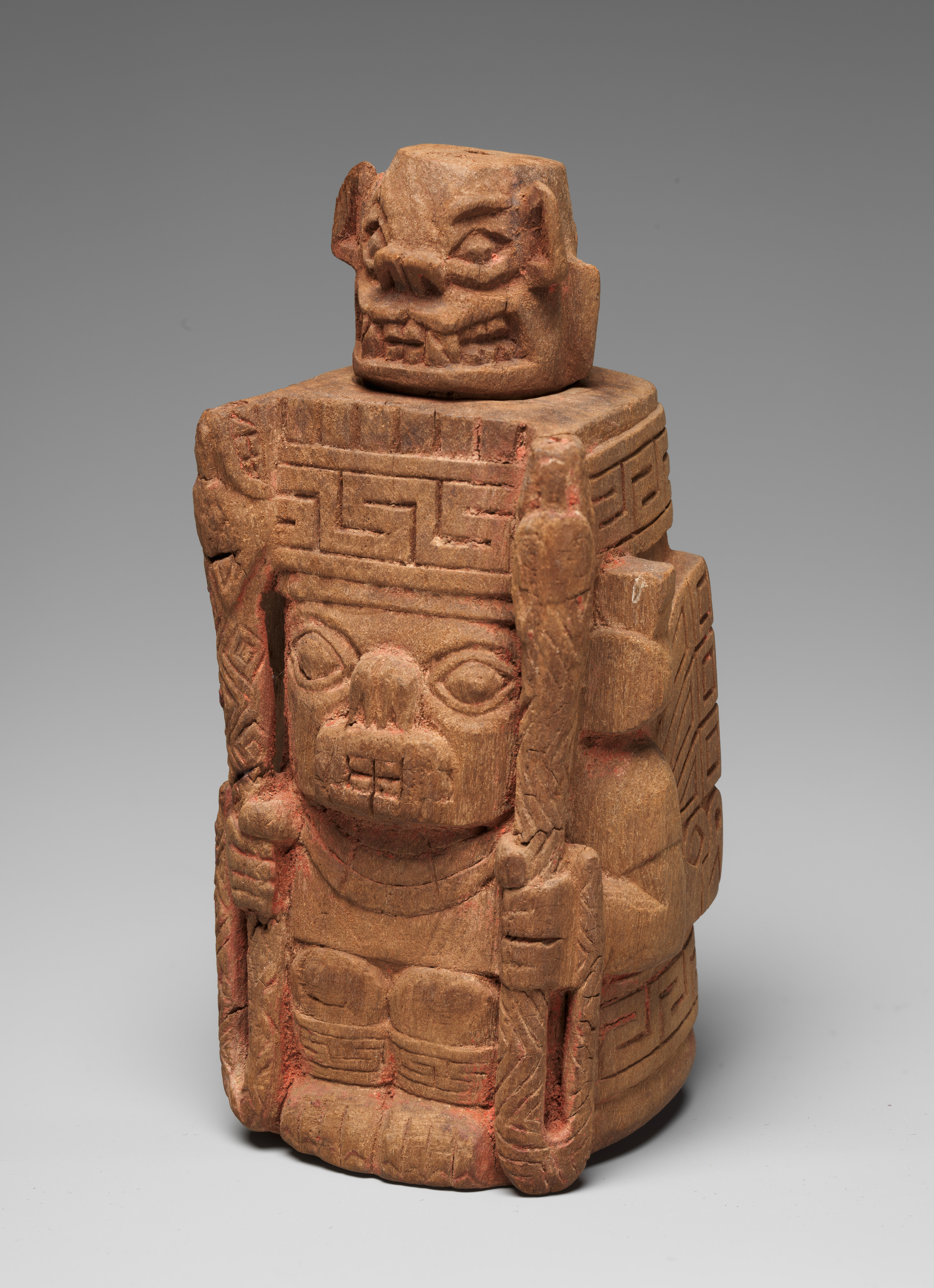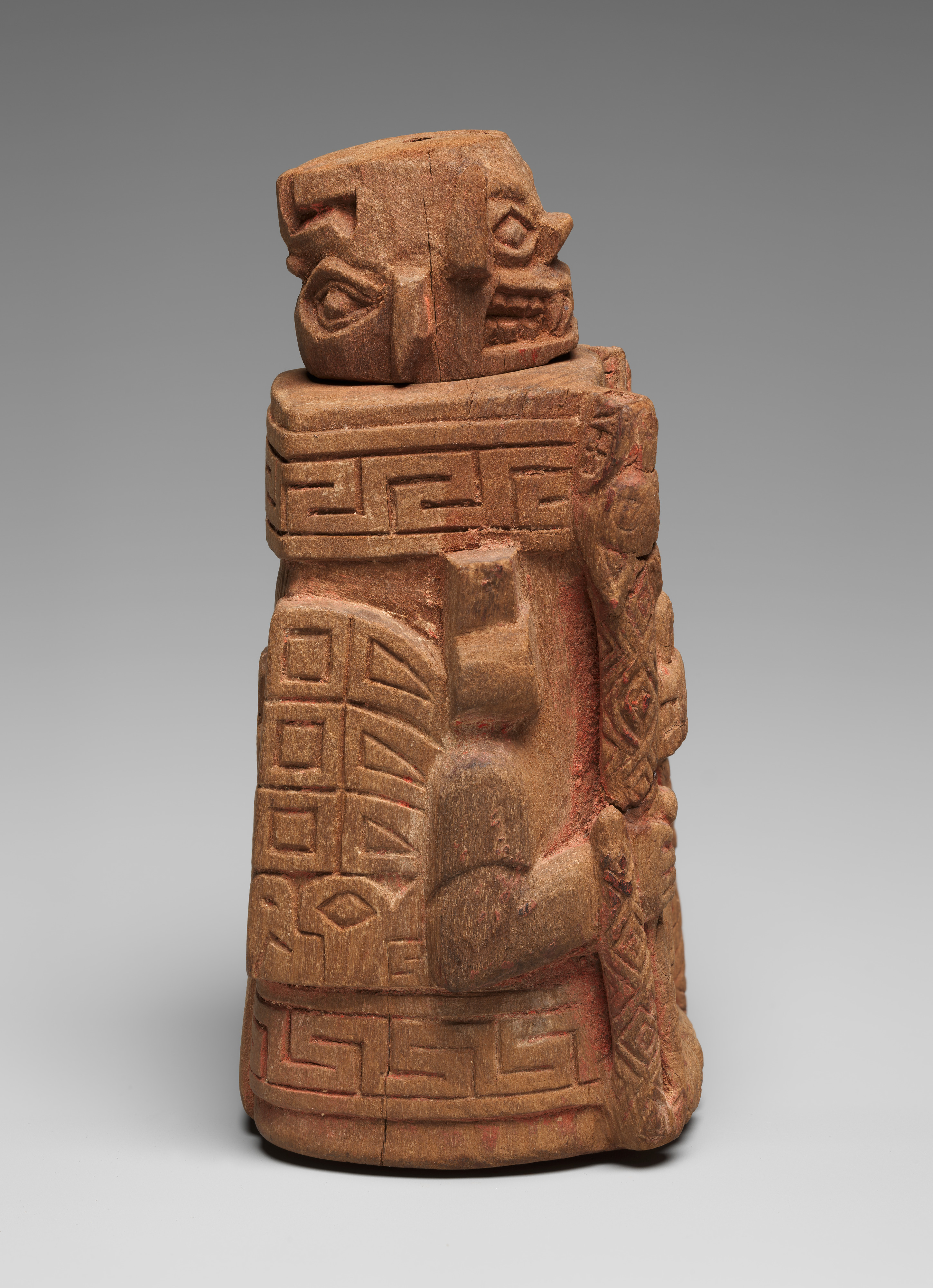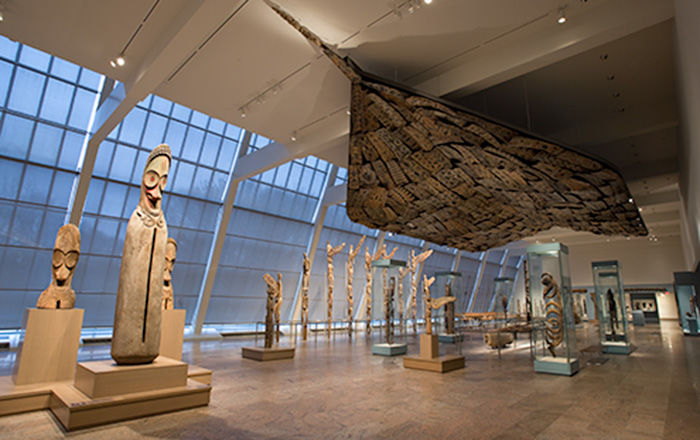Lime container
Not on view
This intricately carved seated wooden figure with human, feline and avian features originally served as a container for a paste of powdered lime (calcium oxide) used when chewing coca leaves. The figure has canine-like teeth and a button nose. It wears a short tunic as well as ornaments around the ankles with a geometric design often referred to as a meander, which is repeated in his hat. The creature holds a snake with a fanged mouth in each hand, and patterned wings sweep back from behind each arm. The back of the container is carved to form a bundle of what may represent spears. On top of the head rests a small, fanged head that is the end of a spoon that extends into the hollow interior and was used to remove the paste. Traces of red pigment are visible on the surface.
The chewing of coca leaves and the use of a lime paste, derived from calcinated seashells, goes back to at least 1000 BCE in Peru. Lime was a necessary part of the ritual of coca-leaf chewing; the coca leaves were put into the mouth to form a quid, and the lime was added to activate the drug. Ancient lime containers are known in a variety of different forms and materials, and those of the Wari and Tiwanaku cultures of the eighth and ninth centuries are of particular interest (for related works see Cleveland Museum of Art, 2007.193; Metropolitan Museum of Art, 1977.376; Museum Fünf Kontinente [formerly the Staatliches Museum für Völkerkunde, Munich], N.M. 186). Often made of wood, these containers can be rather elaborately conceived for such small works.
The Wari Empire dominated much of the Central Andean region in what is known as the Middle Horizon period (500–1000 CE), and its influence was felt from Chiclayo in the north of Peru to Moquegua in the south. The empire’s name derives from its presumed capital, Wari (sometimes spelled Huari), near the present-day city of Ayacucho in the highlands of Peru. The Wari culture is renowned for its extraordinarily fine weavings, highly burnished ceramics, and refined mosaic works in shell and stone.
References and Further Reading
Bergh, Susan E. Wari: Lords of the Ancient Andes. New York and Cleveland: Thames & Hudson; The Cleveland Museum of Art, 2012.
Cabrera Romero, Martha, et al., Wari: Arte precolombino peruano. Seville: Centro Cultural El Monte, 2001.
Giersz, Milosz, and Cecilia Pardo. Castillo de Huarmey: El mausoleo imperial Wari. Lima: Museo de Arte de Lima, 2014.
Isbell, William Harris, Mauricio Uribe, Anne Tiballi, and Edward P. Zegarra, eds. Images in Action: The Southern Andean Iconographic Series. Los Angeles: UCLA Cotsen Institute of Archaeology Press, 2018.
Jones, Julie. Rituals of Euphoria: Coca in South America. New York: Museum of Primitive Art, 1974.
Jennings, Justin. Beyond Wari Walls: Regional Perspectives on Middle Horizon Peru. Albuquerque: University of New Mexico Press, 2010.
Young-Sánchez, Margaret, Tiwanaku: Ancestors of the Inca. Denver: Denver Art Museum, 2004.
This image cannot be enlarged, viewed at full screen, or downloaded.
This artwork is meant to be viewed from right to left. Scroll left to view more.





